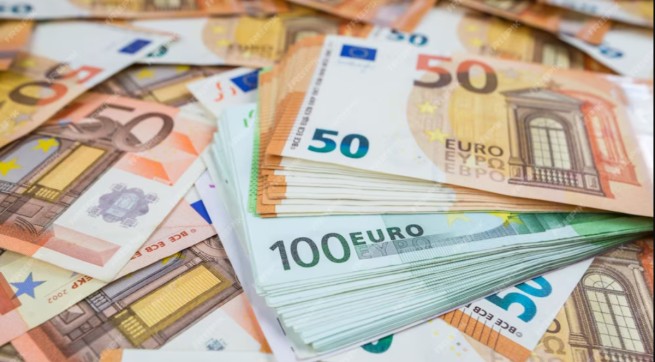The photos posted online raise suspicions that the Greek halls of the British Museum are again damaged by water, as they did not open after the lockdown was lifted.
The Greek Halls of the British Museum, which house the Parthenon marbles, have not reopened to the public since the lockdown was lifted. The reason, according to several sources, is a leaking ceiling that flooded several halls.
Apparently heavy rain in London on July 25, which caused flooding in the city, led to the flooding of the Greek halls in the museum. According to The Art Newspaper, a spokesperson for the museum confirmed that “in one of the [греческих] galleries got water. “
The newspaper published photographs showing signs of flooding at the museum back in January, as well as a picture taken on Wednesday showing a fan installed in front of the Parthenon sculpture exhibition, possibly to help dry up the venue.
Photo from 2018, when water got into the hallthrough the leaked roof.
This is not the first time water has entered the galleries. In 2018, images of water dripping from the ceiling in a hall with a frieze and Parthenon sculptures were widely circulated in the media. This led to the fact that the Minister of Culture of Greece, Lina Mendoni, once again expressed her demand for the return of the cult sculptures to Greece. The museum then declared that the problem was solved.
A posting on the British Museum website informs visitors that rooms 12-18 (Greek galleries) are currently closed “due to ongoing renovations”.
The British Museum said the Greek galleries remained closed in July as work and research was carried out for future restoration, but did not comment on whether there was actually water damage in the part of the museum where the Parthenon marbles are exhibited, and did not say when the galleries would reopen …
Photos from the Greek Hall on July 26, 2021
While the opening of the Acropolis Museum, just below the Acropolis Hill, in 2009 provided Greece with the ideal “home” to reunite all of the Parthenon marble, the British Museum disagreed with Greece’s claim to sculpture. Countless international organizations and voices support their return on the grounds that they were stolen by Elgin and sold to the British Museum, but the official argument of the museum’s trustees is that “there is a positive benefit and public benefit that the sculptures are split between two great museums. each of which tells an additional but different story. “
Earlier in Britain it was stated that the main reason they did not return the treasures of the Parthenon was the lack of a safe place to store them. After the construction of the new building of the Acropolis Museum, such a place appeared, and there is no longer any reason for an excuse. Moreover, now Greece has a similar reason.
But the main reason for the current position of the British Museum is the fear that the return of the frieze, metopes and frontal sculptures from the Parthenon would set an unfavorable precedent, calling into question the legitimacy of all its artifacts acquired before international legal norms for the protection of antiquities appeared. For this reason, they argue that they do not rule out the provision of sculptures to Athens for temporary use. But on condition that Greece recognizes the ownership of the British Museum, which Greece will never do.
New Acropolis Museum built in 2004
“The current government of Greece, like any other Greek government, is not going to give up the demand for the return of stolen sculptures that the British Museum, contrary to any moral principles, continues to illegally hold,” Mendoni said during the celebration of the Acropolis Museum’s birthday last year.
After Turkish scholars proved that the firman of the Grand Vizier of the Ottoman Empire, on the basis of which Lord Elgin removed the Parthenon marbles from Greece, is fake, Britain stopped negotiating altogether.
In 2019 Greece supported by China, stating that from 1840 to the present, due to military, economic and other reasons, more than 10 million units of Chinese cultural monuments were exported to Japan, America, Europe, Southeast Asia and other countries and regions. More than 1 million of them are state treasures of the 1st and 2nd categories.






More Stories
Metropolitan Chrysostom: "The Church will never recognize same-sex marriage – the issue is not closed"
Schools in Germany: convert to Islam so as not to be an outsider
On this day in 1896, a statue was found in Delphi "Delphic Charioteer"